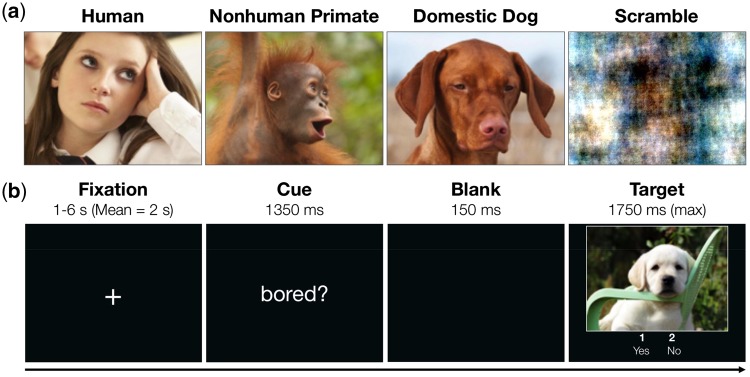Fig. 1.
Experimental design. (a) In the Implicit Task, participants perform a visual one-back on a series of naturalistic images showing human, non-human primate, and dog facial displays. Images appear in an event-related design intermixed with a phase-scrambled subset of the same images which provided a baseline for univariate contrasts. We refer to the task as ‘implicit’ only to designate that at the time of performing the task, participants were not explicitly directed to attend to or think about the images in a particular way, and were naïve to the fact that in a subsequent task they would be asked to consider the emotional states of each target. (b) The sequence of screens from an example trial in the Explicit Task, which participants learn about only after completing the Implicit Task. The task features the same images used in the Implicit Task (excluding scrambles). Each image is presented twice, once preceded by a verbal cue directing participants to accept or reject an emotion attribution about the target, and once by a verbal cue directing participants to accept or reject an expression attribution about the target (all verbal cues presented in Table 1). Once the image appears, participants have 1750 ms to commit a ‘Yes/No’ manual response. Every cue preceded an equal number of images from each target type and elicited a response of either ‘Yes’ (two-third of trials) or ‘No’ (one-third of trials) in the majority of respondents in an independent sample.

